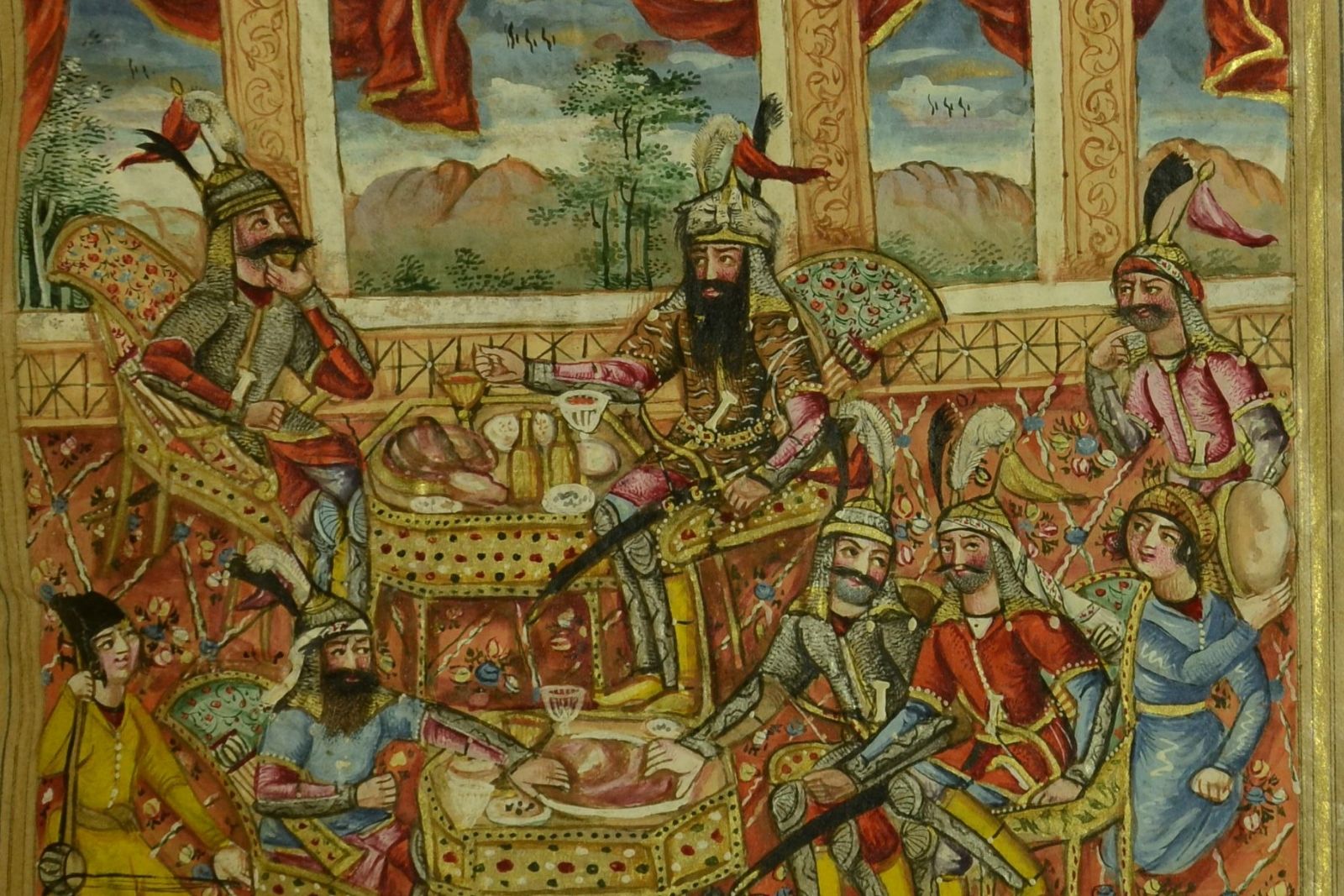The Foundation of Persepolis
One of the most famous historical cities of Iran is definitely Persepolis. While Iran has had many large cities and important capitals, including Ecbatana, Arsacia, Ctesiphon, and others, none have quite captured the imagination quite like Persepolis.
Where is Persepolis?
Persepolis is located in the province of Fars in southern Iran. It is close to the major modern city of Shiraz. It was essentially constructed in the very heart of the Achaemenid Empire. The modern province of Fars roughly corresponds to ancient Parsa, which was considered the land of the Persians. While the Achaemenid Persians had several extremely important cities as well as other capitals, Persepolis was definitely a site of great psychological importance for the Empire even if it was not a standard city.
Who Built Persepolis?
It is important to note that Persepolis was not constructed by the founder of the Persian Empire, the famous Cyrus the Great (Cyrus II Teispid). The capital of the empire constructed by Cyrus was Pasargadae, also located near modern Shiraz. The tombs of Cyrus and his son, Cambyses II, are located there. Persepolis was constructed by the Persian king of kings Darius I Achaemenid, who killed the second son of Cyrus the Great, Bardiya, and established himself on the throne. It could be argued that the construction of a new ceremonial capital at Persepolis in a way marked a break with the past, even though Darius himself tried extremely hard to connect himself to Cyrus the Great’s family and firmly establish the legitimacy of his rule. The following Achaemenid kings, including notably Xerxes and Artaxerxes I and III are also known to have ordered the construction of important buildings in Persepolis.
What was Persepolis?
Persepolis was not technically a city in the way we imagine. Its archaeological remains make it clear that Persepolis was not like the other great cities of the Ancient Near East, like Uruk, Babylon, Nineveh, or even the famous capital of the Elamites, Susa. Persepolis did have several palaces and buildings where the king would gather soldiers, nobility, and receive tribute from even the most distant fringes of the Empire. However, there are little in the way of permanent structures at the site. This could indicate that it was purely a ceremonial capital, though it must be noted that only a few generations earlier, the Persians, like their Median and Parthian brethren to the north, were not exactly a settled people and were nomadic or semi-nomadic. It is possible that there were temporary buildings at Persepolis and that Darius and his successors had a sort of mobile capital set up. This is not an unprecedented scenario for the Ancient Near East. Several famous kings, such as the well-documented Zimri-Lim of Mari, were semi-nomadic kings.
The city contained many politically important structures. The most famous is definitely the Apadana, the main and most impressive palace building and probably the oldest building in the city. Its roof was held up by 72 columns and it covered an area of over 1000 square meters. Other important and magnificent buildings include the Gate of All Nations and the Stairs of All Nations constructed by Xerxes I, which contain many depictions of representatives of all the ethnic groups of the Persian Empire paying tribute to the Achaemenid king. There are also other buildings at the site, including the Tachara palace and the royal treasury.
The Etymology of Persepolis
The Achaemenid kings called themselves the kings of Parsa. This name referred both to the province of Persian itself, as well as to the city of Persepolis.
The Meaning of Persepolis
Persepolis was the Greek name of the city. It simply means “the city of the Persians.” This reflects its importance as the heart of the Achaemenid Empire. Even though it was not a city in the usual sense of the word, and even though it didn’t exactly have a huge permanent population or produce many things, it was an important symbol of the power of the king of kings, (the power of Darius I in particular).
Different names of Persepolis - Takhte Jamshid
In later Persian sources, the site of Persepolis is called “Takhte Jamshid.” Jamshid is a semi-mythological king of the Iranians whose reign is described in the epic Shahnameh, the Book of Kings, written by Ferdowsi in the 10th century AD. Of course, Jamshid did not construct Persepolis. However, historical memory is a fickle thing, and it is not surprising that the exploits of Darius the Great had been forgotten or corrupted over a millennium after his reign.
Famous kings of Persepolis
The Achaemenid kings who used Persepolis as their capital are the following. Names in bold are kings who are known to have completed major construction projects in the city accompanied by inscriptions.
Darius I (522-486)
Xerxes I (486-465)
Artaxerxes I (465-424)
Xerxes II (424)
Sogdianus (424?)
Darius II (424-404)
Artaxerxes II (404-358)
Artaxerxes III (358-338)
Artaxerxes IV (338-336)
Darius III (336-331)
The Inscriptions at Persepolis
Persepolis is also home to a large number of royal inscriptions made by the Achaemenid kings. There are inscriptions there from Darius I, Xerxes, Darius II, and Artaxerxes I through III. These inscriptions are not as majestic as the massive text at Behistun, which is the longest Achaemenid royal inscription and the longest text in Old Persian, but they are interesting and provide insight into the construction projects of the Achaemenid kings. There are inscriptions from only a few kings at Persepolis, including from Darius himself, his son Xerxes (there are actually more from Xerxes than Darius), and Artaxerxes I - III. The vast majority of the Persepolis texts deal with construction - they reveal that there was extensive construction at the site even after Darius. Additionally, the texts show that many buildings were so large and impressive that their construction could not be completed during the reign of one king - Xerxes boasts of completing buildings that had been left unfinished when his father passed, and the text of Artaxerxes I also mentions finishing a palace that was not complete upon the passing of Xerxes.
There is one unique text from Persepolis that is perhaps the most interesting of the Achaemenid royal inscriptions aside from Behistun. This is known as the Daiva Inscription (known to scholars as XPh, the 8th inscription of Xerxes found from Persepolis). In this text, Xerxes describes how one of the satrapies of the empire was worshipping “daivas,” or demons in Old Persian. Subsequently, Xerxes moves in and stops the worship of the daivas. It is one of the most interesting but frustrating texts from the Achaemenid period, since it describes a very interesting political and religious historical event, but Xerxes neglects to mention where and when anything is happening in the narrative. This ambiguity has of course led to much speculation about what the king is talking about in this text.
In the vast majority of Achaemenid inscriptions, only the god Ahura Mazda is mentioned. Darius I, Xerxes I, and most of their successors only refer to them and never to other deities in the Zoroastrian pantheon. This changed with Artaxerxes II. In his texts (none of which have been found in Persepolis), he mentions the gods Mithra and Anahita together with Ahura Mazda. In terms of texts from Persepolis, the successor of Artaxerxes II, Artaxerxes III, mentions Ahura Mazda and Mithra together (but not the goddess Anahita).
The Persepolis Fortification Archive
One of the most significant discoveries in Achaemenid studies was made at the fortifications of Persepolis. In a small room, a full archive of several thousand administrative tablets was discovered during excavations by the University of Chicago. These tablets are largely in the Elamite language, which was not related to Old Persian or Indo-European at all. In fact, it is not definitively related to any known language family (some claim it is related to Dravidian). However, due to the long standing administrative traditions of Elam and the abundance of scribes in the area familiar with it, Elamite became one of the main languages of administration in the Achaemenid Empire. There are a few administrative tablets in other languages, such as one in Greek and one in Old Persian, but the vast majority of them are in Elamite. There are also several tablets in the archive that are not inscribed and only have seal impressions, and there are a few tablets that have Aramaic writing on them as well. Aramaic was probably the main language of administration of the Empire, but since it was mainly written on perishable materials, the vast majority of such documentation has been lost. Ironically, the violent destruction of Persepolis is what preserved this archive. The tablets were baked and hardened, thus preserving them until their discovery.
The Persepolis Fortification Archive gives us a glimpse into the inner workings of the Achaemenid Empire during the reigns of Darius I and his son Xerxes. In it are several receipts, letters, and tallies pertaining to supplies, donations, labor, mercantile activities, etc. We have learned a significant amount about the Persian Empire from these invaluable documents, including the activities of several nobles, noblewomen, merchants, priests (Zoroastrian magi as well as priests in Elamite and Mesopotamian temples), scribes, and of course administrators. Additionally, several Persian words otherwise unattested have been found in the documents of the archive as loanwords in Elamite. There is also significant data in the archive about the activities of merchants and workers of various ethnicities within the empire.
You can find more information about the Persepolis Fortification Archive at the website of the University of Chicago’s Oriental Institute, including detailed photos of some of the tablets.
The last days of Persepolis
Like all great empires throughout history, the Achaemenid Empire eventually fell, and its collapse came at the hands of the most famous conqueror of all time - Alexander the Great.
The Burning of Persepolis
Persepolis was the capital (or one of the capitals) of the largest, most powerful empire the world had ever seen up to that time. It was situated in the heart of this ancient superpower. However, even this couldn’t save the city from destruction. In the mid-4th century BC, the king of Macedon, Phillip II, united Greece and prepared an extremely professional, well-equipped, and well-led army to invade the Persian Empire. While Phillip died before his dreams could be realized, his son, Alexander the Great, would go down in history as one of the greatest military leaders of all time for what he was about to accomplish. In battle after battle, Alexander defeated the armies of the King of Kings Darius III, until inflicting a decisive blow at the Battle of Gaugamela in 331, forcing the Achaemenid ruler to flee. There are many legends and stories about what exactly happened when Alexander entered Persepolis, but one thing is clear - the glorious capital of the Achaemenid Empire was destroyed.









